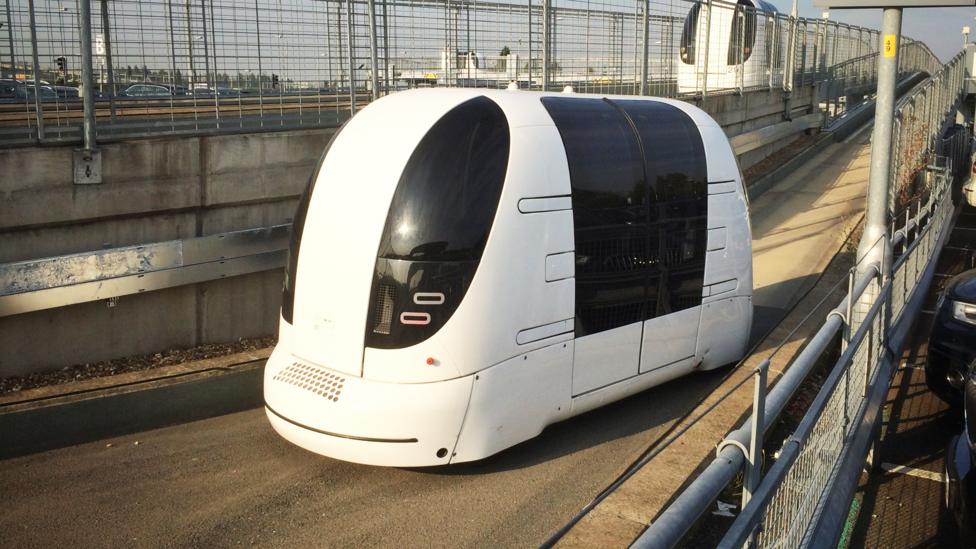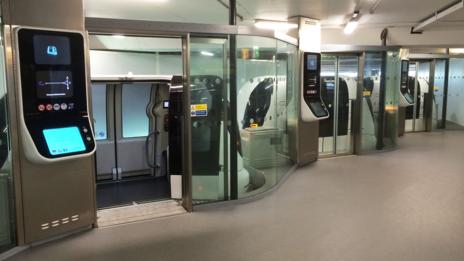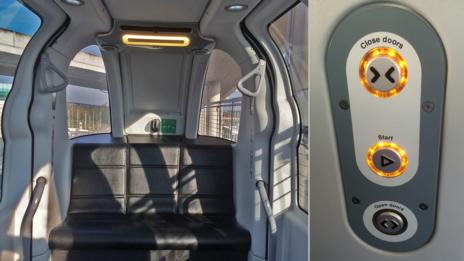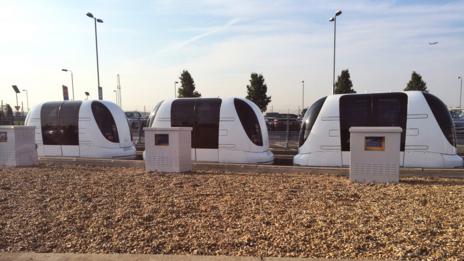
These
autonomous people-movers run along a closed course between Heathrow's
Terminal 5 and the Business Car Park, 2.4 miles away. (Matthew Phenix)
Since 2011, on a closed course between the terminal and the Business Car Park, 2.4 miles away, a fleet of 21 diminutive passenger pods have ferried as many as 1,000 passengers each day, quietly logging well more than 1m autonomous miles in the process. It’s a small-scale experiment, commissioned by Heathrow Airport Holdings Limited and built by UK-based Ultra Global PRT (for Personal Rapid Transit), but its success – measured by cost savings, environmental impact and user-friendliness – may help define locomotion in the city of tomorrow.
This is no miniature railway; Ultra pods are real cars, with rubber tires and untethered, battery-driven powertrains. Although they offer space for as many as six people and their luggage, they are compact, measuring 12ft long, 5ft wide and 6ft tall; and lightweight, tipping the scales at just 1,870lbs, including a 141lb battery pack. At its 25mph top speed, the pod draws only 2kW of electricity and hums along at 35dB (quieter than a refrigerator). Pods self-monitor battery level, occasionally excusing themselves at station stops for “opportunity charging”.

Operation is splendidly simple. In the station, touch-screens allow riders to select their destination (Heathrow’s system offers only two outbound options). The doors open and a mellifluous recorded voice welcomes the rider and begins narrating the experience. After the passenger presses the “Close doors” and “Start” buttons, the pod autonomously backs out of its parking spot and hums away from the station.

Of course, building a closed-course autonomous vehicle is decidedly easier than building one for the open road, à la the Google self-driving car, which must negotiate such obstacles as complex roadway interchanges, pedestrians and non-autonomous vehicles. But simplicity has its advantages. The pods themselves, which use mostly off-the-shelf automotive hardware, have proven highly reliable, and the system’s lightweight infrastructure – slender, easily installed trackways and flyovers – is, says Ultra, between six and 10 times more resource-efficient than typical road or rail systems.

While it is not difficult to imagine specific pod applications – within city centres, for example, or between cities and airports – an all-pod future is a decidedly loftier proposition. A pod network like Heathrow’s works because riders can grab any pod, at any time, with no waiting. And while the service is personal, it isn’t private. The question is, will future drivers be willing relinquish the privilege of owning the cars of their choice – and the freedom of driving those cars themselves – for the convenience of a hands-off motoring future?

0 comments:
Post a Comment